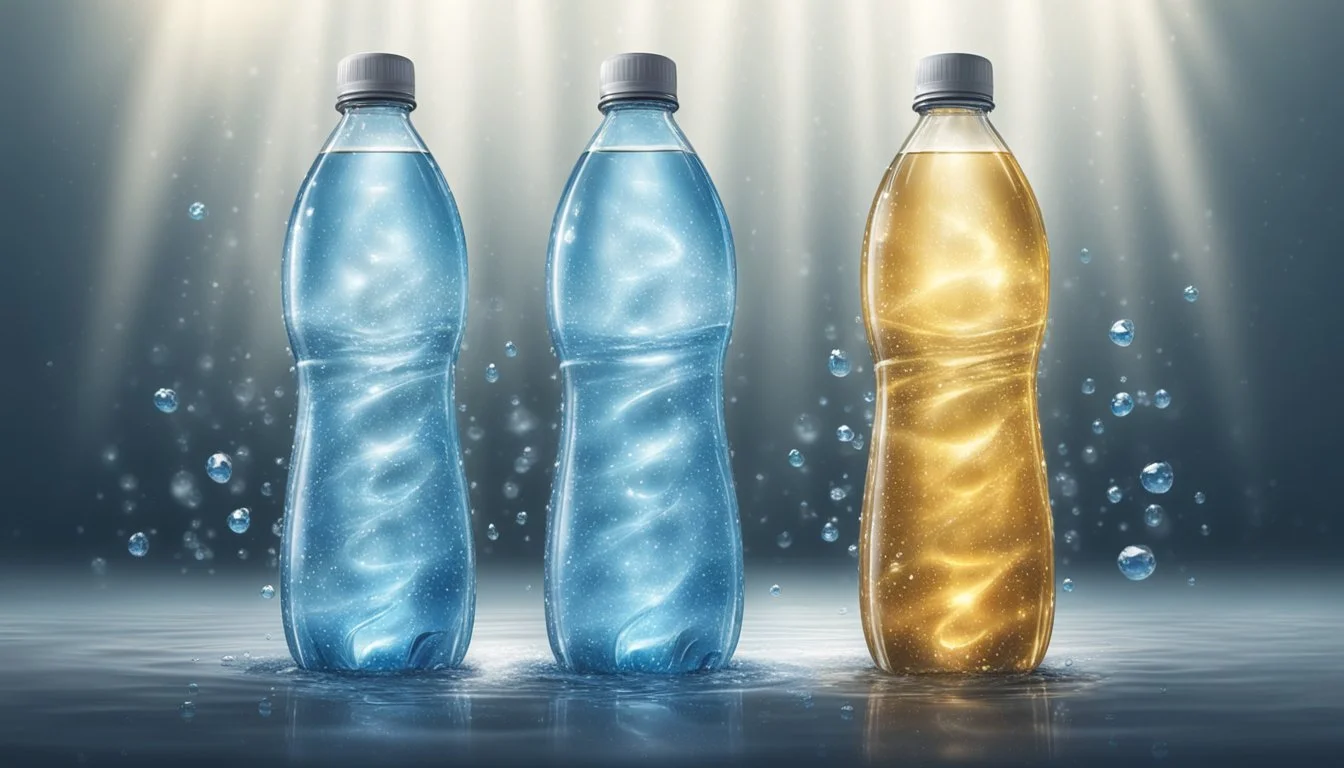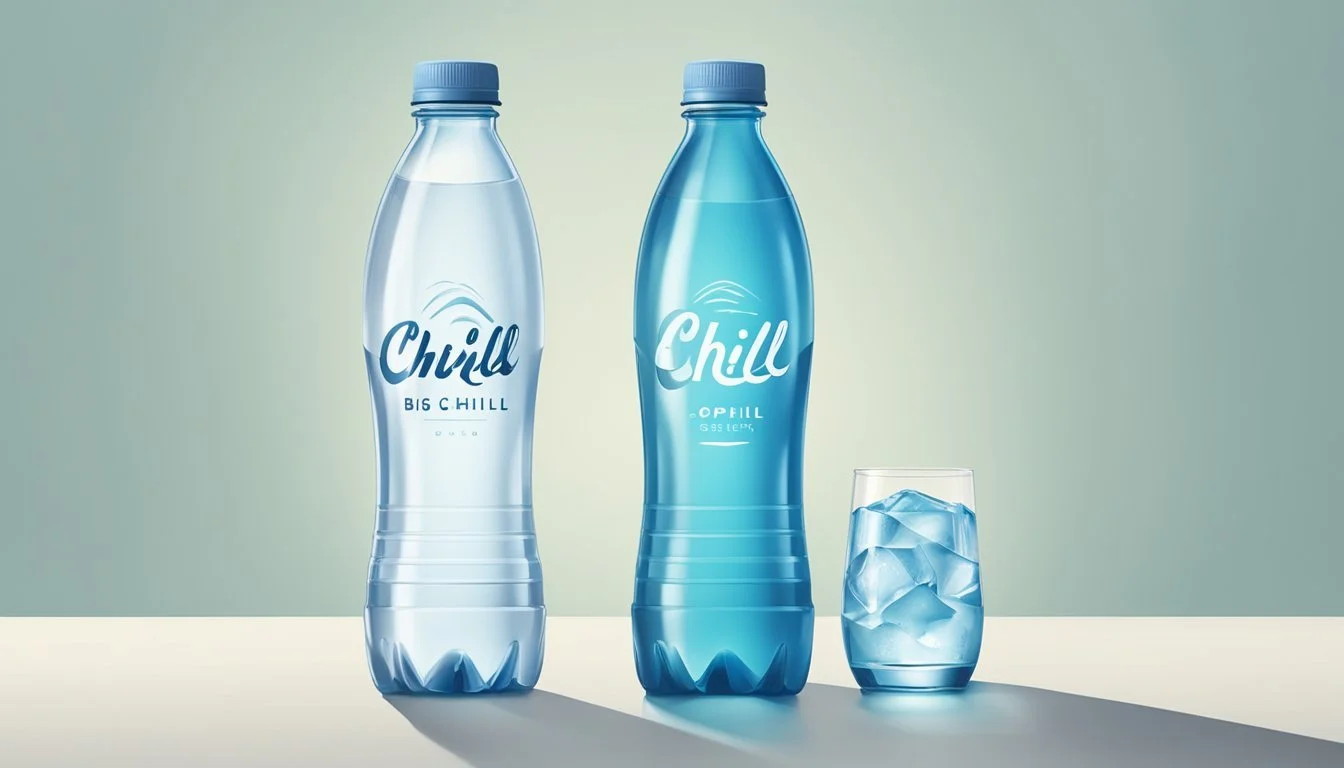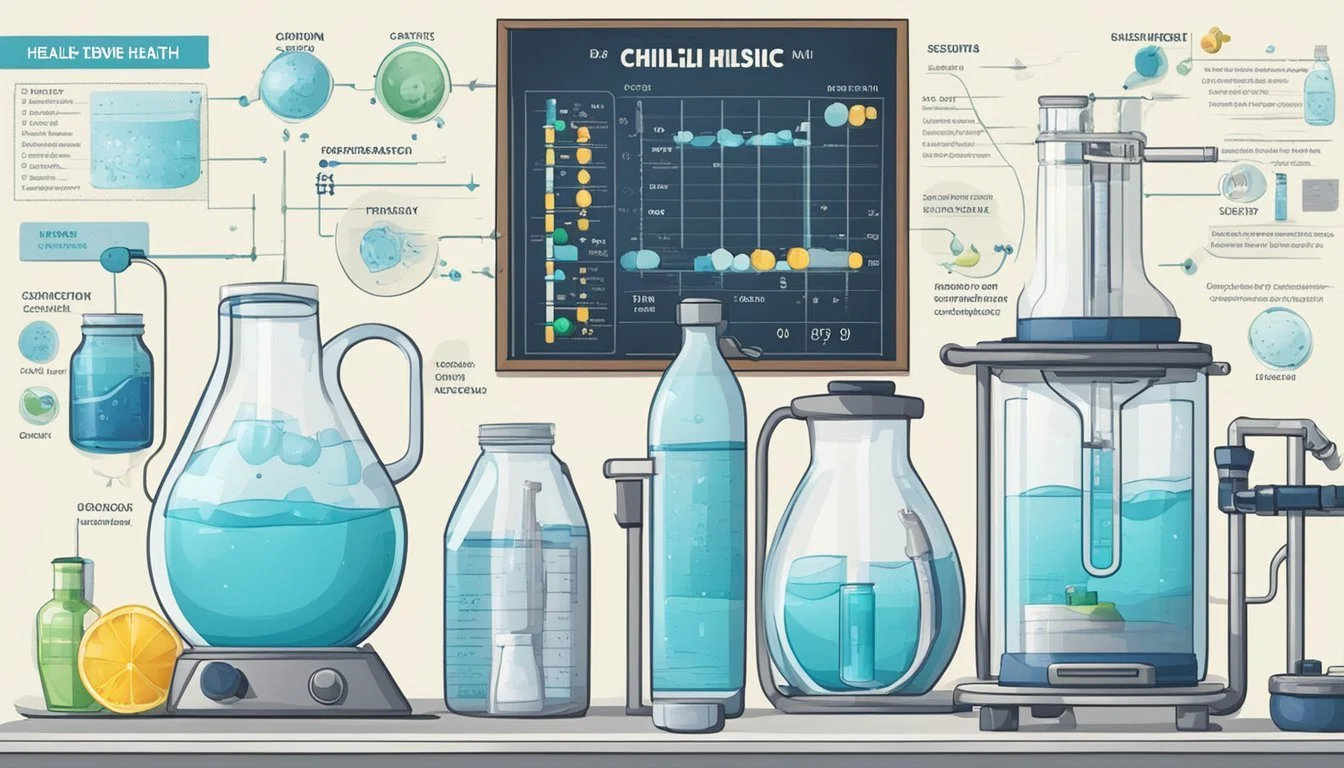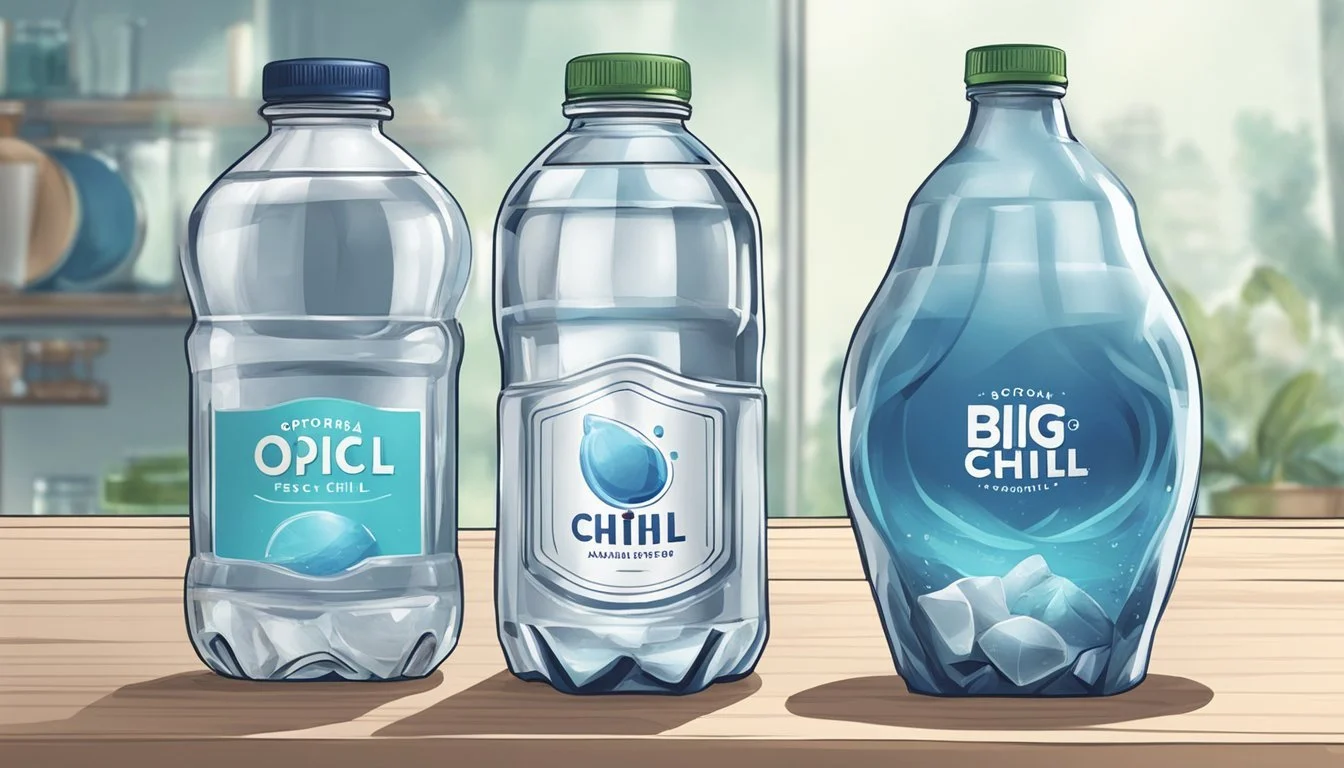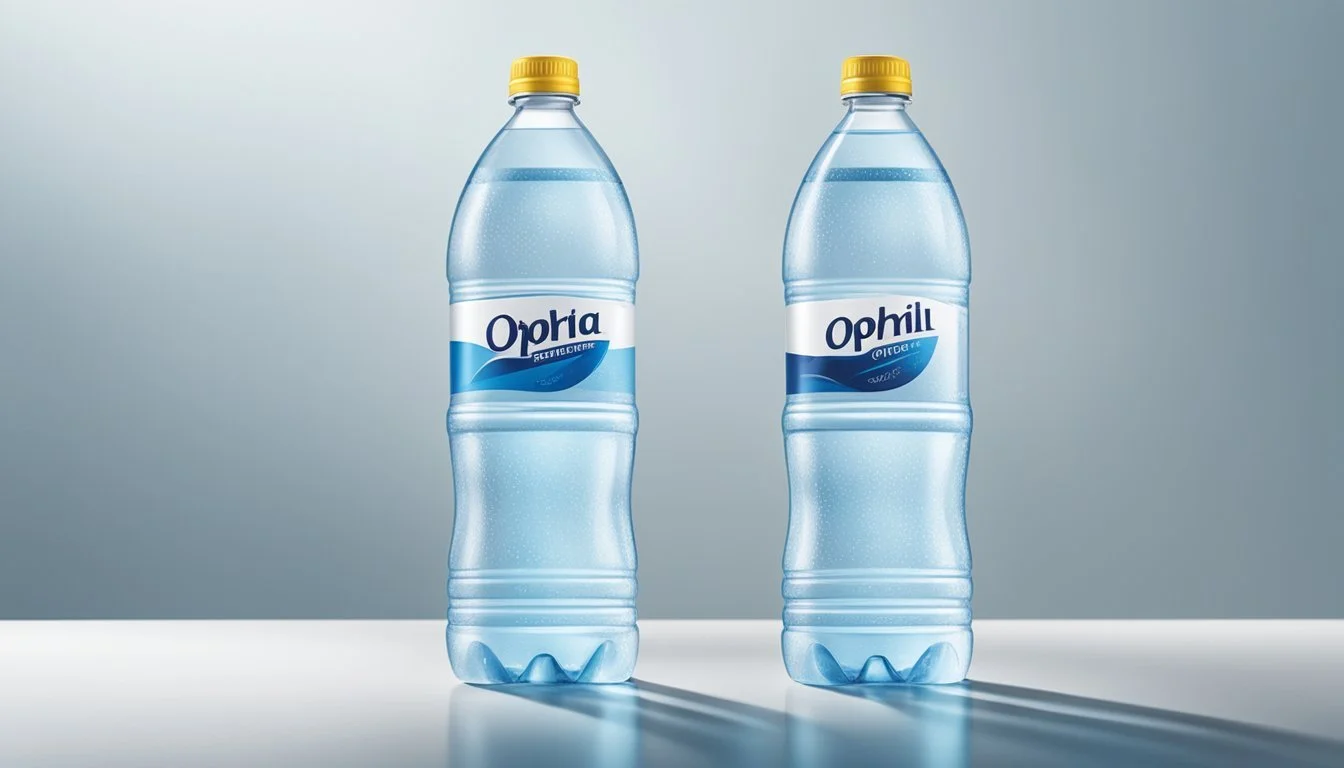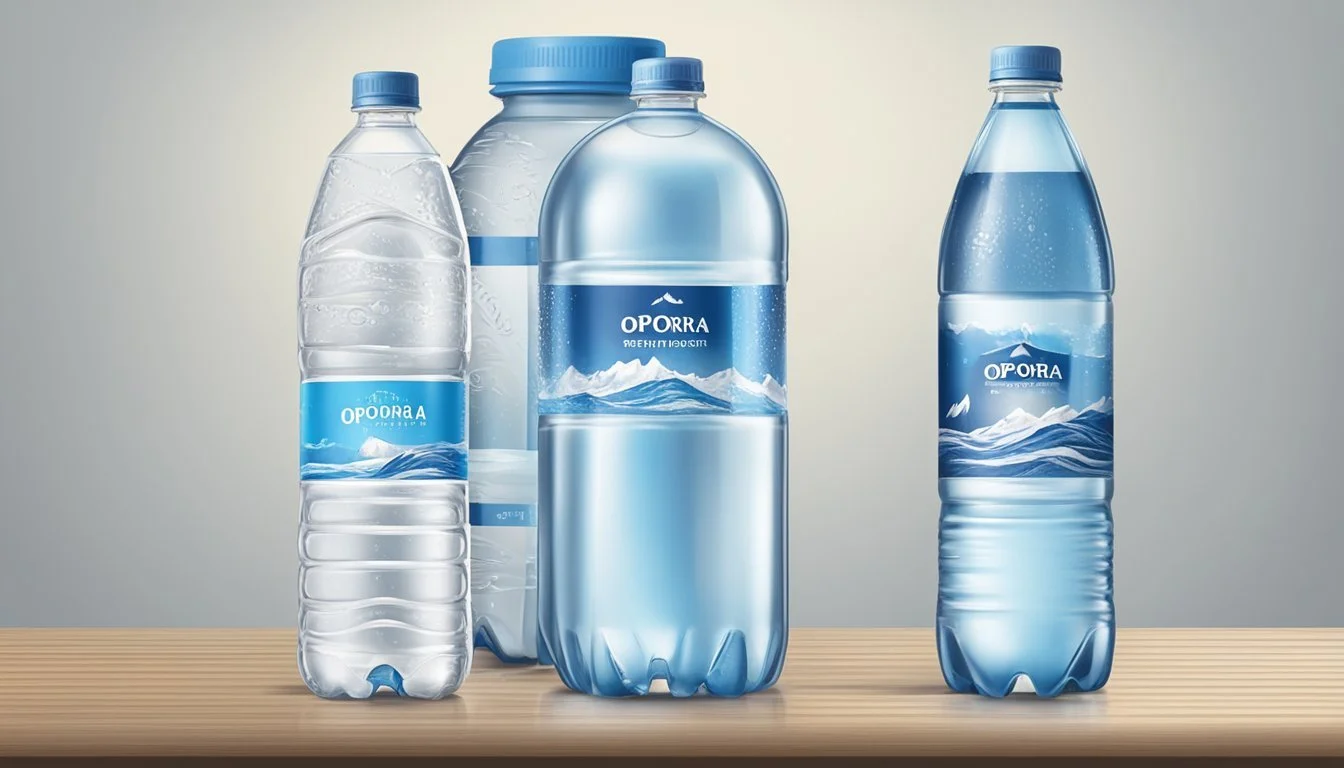Big Chill vs. Ophora
Evaluating the Superior Bottled Water
When it comes to premium bottled water choices, the debate often narrows down to Big Chill and Ophora. Both brands have gained reputations for their unique qualities and health benefits. For those seeking a clean, affordable option, Big Chill stands out with its neutral pH and accessibility through major retailers like CVS.
On the other hand, Ophora offers something different. Marketed as a luxury, oxygenated water, Ophora emphasizes its potential health benefits and unique filtration process. While it comes with a higher price tag, some consumers believe the benefits justify the cost.
By comparing these two options based on taste, health benefits, and price, readers can decide which brand best fits their needs.
The Essence of Water: Understanding the Basics
Water is essential for life, playing a critical role in maintaining health and proper bodily functions. This section explores the key aspects of bottled water and its significance in hydration and health.
What Is Bottled Water?
Bottled water is typically processed drinking water that is packaged and sold in plastic or glass bottles. This category can include spring water, mineral water, and purified water.
Spring water is derived from natural springs, offering a refreshing taste with naturally occurring minerals. Meanwhile, mineral water must contain specific levels of minerals from its source. Purified water undergoes filtration processes to remove contaminants, resulting in a clean, neutral taste.
Consumers often choose bottled water for its convenience and assurance of quality. Unlike tap water, which may contain varying levels of contaminants, bottled water is subject to rigorous safety standards, ensuring it is safe to drink.
The Role of Water in Hydration and Health
Water is vital for maintaining hydration and supporting bodily functions. Hydration affects everything from digestion and circulation to temperature regulation and joint lubrication. Drinking sufficient water helps prevent dehydration, a condition that can lead to fatigue, headaches, and impaired cognitive function.
Safe drinking water is crucial for health. Contaminated water sources can cause serious illnesses. Bottled water offers a dependable alternative, often free from pollutants found in some tap water supplies.
Hydrated individuals typically display better overall health, improved energy levels, and enhanced mental clarity. Regular consumption of clean water, whether bottled or from a safe tap, plays an undeniable role in sustaining life.
Sources and Types of Bottled Water
Understanding the various sources and types of bottled water helps consumers make informed choices. Different processes and categories like spring water, purified water, and mineral water each offer distinct characteristics.
Spring Water and Its Journey
Spring water comes from natural springs where water flows to the surface without mechanical pumps. It’s often rich in minerals as it travels through underground aquifers.
Examples:
Mountain Valley: This spring water from Arkansas has a light, clean taste with a velvety texture, indicated by minimal sweetness and subtle mineral notes.
Natural Spring Water: Commonly found in bottled water brands, it is often lauded for its taste and purity.
Spring water undergoes minimal processing to preserve its natural composition.
Purification Processes: From Source to Bottle
Purified water originates from any water source but undergoes rigorous processes to remove impurities. These include distillation, deionization, and reverse osmosis.
Key Methods:
Reverse Osmosis: Eliminates contaminants by forcing water through a semi-permeable membrane.
Distillation: Involves boiling water and condensing the vapor to separate impurities.
Deionization: Uses ion exchange resins to remove mineral ions.
Brands like Big Chill employ advanced techniques to ensure high purity levels. This water is often free from most contaminants, making it ideal for those seeking the cleanest options.
A Spectrum of Water Types: Mineral, Sparkling, and More
There is a wide array of bottled water types, each offering unique features. Mineral water contains natural minerals and must maintain fixed levels regulated by authorities.
Types Include:
Mineral Water: Rich in essential minerals like calcium and magnesium.
Sparkling Water: Carbonated naturally or by adding carbon dioxide gas.
Seltzer: Carbonated but without added minerals, differentiates itself from club soda which includes salts like sodium bicarbonate and potassium sulfate.
These diverse options cater to various preferences, from taste to health benefits, and make it easier for consumers to find their ideal hydration source.
Chemical Composition and Health Benefits
Examining the chemical composition provides insight into pH levels, essential minerals and electrolytes, and potential contaminants, all of which impact the health benefits and safety of bottled water choices.
pH Levels in Bottled Water
pH levels in bottled water can significantly affect taste and health. Big Chill and Ophora are marketed as having ideal pH balances. Big Chill typically has a neutral to slightly alkaline pH, around 7 to 8, which is beneficial for balancing body pH levels.
Ophora, on the other hand, is alkaline with pH levels often reaching 8.5 to 9.5. Alkaline water proponents argue that such levels can aid in reducing acid in the body, which may benefit people with acid reflux. However, there is limited scientific evidence to support extensive health benefits solely from higher pH levels.
Minerals and Electrolytes for Body Function
Both Big Chill and Ophora claim to offer minerals and electrolytes essential for bodily functions. Big Chill generally includes basic minerals like calcium, magnesium, and potassium, which support bone health and muscle function.
Ophora is known for its higher mineral content, including electrolytes that are critical for hydration. It often contains higher levels of calcium and magnesium compared to average bottled water brands. These minerals are crucial for nerve function and maintaining fluid balance in the body.
Comparison of mineral content:
Calcium (mg/L): Big Chill: ~20, Ophora: ~30
Magnesium (mg/L): Big Chill: ~5, Ophora: ~15
Potassium (mg/L): Big Chill: ~1, Ophora: ~2
Understanding Contaminants and Safety Measures
Safety and contaminants are essential considerations when choosing bottled water. Big Chill undergoes extensive filtration processes to remove potential contaminants like lead, chlorine, and bacteria, ensuring the safety and purity of its water.
Ophora uses advanced purification methods, including ozone treatment and UV light, to eliminate contaminants. They also ensure fluoride levels are non-detectable or extremely low, catering to consumers concerned about fluoride intake.
Consumer Reports and other testing bodies often confirm these safety measures, indicating both brands meet health and safety standards. Consistently low levels of harmful compounds, such as heavy metals and chlorine, are critical for long-term consumption safety.
Big Chill vs. Ophora: Brand Profiles
Big Chill and Ophora are two notable brands in the bottled water market, each offering distinct characteristics in terms of origin, product range, and brand philosophy.
Big Chill: Brand Overview and Offerings
Big Chill is known for its high-quality bottled water that is sourced from pristine natural springs.
The brand emphasizes purity and taste, ensuring their water is free from contaminants and rich in essential minerals. They leverage advanced filtration techniques to maintain a consistently clean and refreshing product.
Key Offerings:
Variety of Bottle Sizes: From personal-sized bottles to larger, family-friendly options.
Specialized Water Types: Including mineral-rich and electrolyte-enhanced varieties.
Sustainability Efforts: Use of recyclable materials and eco-friendly packaging.
Big Chill's commitment to quality is reflected in their meticulous sourcing and production processes, providing consumers with a reliable hydration option.
Ophora: Brand Philosophy and Products
Ophora stands out with its focus on technologically-enhanced water to optimize health benefits.
The brand aims to provide more than just hydration by enriching its water with additional oxygen and incorporating a proprietary purification process.
Key Offerings:
Oxygenated Water: To enhance physical performance and recovery.
Nutrient-Enhanced Water: Infused with essential minerals and antioxidants.
Alkaline Water Options: Targeted at those seeking pH-balanced hydration.
Ophora’s philosophy revolves around promoting overall wellness and vitality through innovative water products that go beyond conventional hydration solutions.
Taste Test: Comparing Water Flavors
When examining the flavor profiles of Big Chill and Ophora, it is essential to discuss the nuances of taste and expert evaluations to understand these waters better. Both brands offer unique experiences to the tongue, setting them apart from other bottled waters.
The Palette of Water Taste
Big Chill is known for its pure and crisp taste. It boasts a refreshing profile that leaves a clean aftertaste, making it an ideal choice for those who prefer a straightforward, uncomplicated water flavor.
Ophora, on the other hand, provides a richer and more textured taste. This water is often described as smooth with a subtle mineral presence that adds depth to the flavor. Some drinkers note a slightly sweet finish, enhancing the overall drinking experience.
Comparing these two, Big Chill often appeals to those seeking simplicity in their hydration, while Ophora might attract those who enjoy nuanced flavors and a more sophisticated mouthfeel.
Expert Opinions: Water Sommeliers Weigh In
Water sommeliers have provided insightful opinions on both Big Chill and Ophora. They often highlight the freshness and clarity of Big Chill, praising its absence of any noticeable mineral taste. This makes it a favorite during blind taste tests where purity is a significant criterion.
In contrast, sommeliers appreciate Ophora for its complex flavor profile. The layered taste experience is noted for mineral notes and smooth, velvety texture. This makes Ophora a go-to option for pairing with gourmet meals, where its flavor complexity can complement different dishes.
Experts agree that while Big Chill excels in clean, unadulterated hydration, Ophora offers an enriched drinking experience, catering to varied palate preferences.
Environmental Impact and Sustainability
Big Chill and Ophora bottled waters differ significantly in their approaches to environmental impact and sustainability, particularly in their packaging and sources.
Plastic Bottles vs. Eco-Friendly Alternatives
The environmental impact of plastic bottles is extensive. Plastic takes centuries to decompose, often ending up in landfills or polluting oceans. Big Chill predominantly uses plastic bottles, which are convenient but not environmentally friendly.
Ophora offers more sustainable options, such as glass bottles and BPA-free reusable bottles. Glass is more environmentally friendly as it can be recycled indefinitely without degrading in quality. Reusable bottles further reduce waste by eliminating single-use plastics.
Key Considerations:
Big Chill: Primarily plastic, contributes to landfill waste.
Ophora: Uses glass and BPA-free options, reducing environmental impact.
Source Conservation and Long-Term Sustainability
Sourcing practices also affect long-term sustainability. Big Chill sources from traditional aquifers, potentially depleting local water tables if not managed sustainably.
Ophora, on the other hand, focuses on sustainable water sourcing. Their methods include using renewable aquifers with monitored extraction rates to ensure minimal disruption to local ecosystems.
Key Considerations:
Big Chill: Potential depletion of water sources.
Ophora: Emphasis on renewable and sustainably managed sources.
Pricing and Consumer Choices
When comparing Big Chill and Ophora, understanding the pricing and consumer choices available is key to making an informed decision. The analysis here will specifically look at the affordability and value of these brands versus other options in the market.
Affordable vs. Premium Brands
Big Chill represents affordable bottled water. Typically found in CVS stores, it appeals to budget-conscious consumers. For instance, a liter bottle generally costs less than $1, making it accessible and popular for daily hydration needs.
On the premium end, Ophora markets itself as a luxury brand. With prices often exceeding $10 per liter, it targets consumers interested in high-quality, oxygen-rich water. Comparable brands include Fiji Water and Voss, which also emphasize purity and a high-end experience.
While affordable brands like Big Chill and Nestle Pure Life offer basic hydration, premium options deliver enhanced taste and perceived health benefits. Each price tier meets different consumer expectations and willingness to pay, reflecting the diverse market for bottled water.
Cost Analysis: Is Expensive Water Worth It?
Evaluating if expensive water is worth the higher price involves considering several factors. For premium brands like Ophora, Fiji Water, and Acqua Panna, the higher cost often includes advanced filtration processes and unique mineral content.
Consumers are paying for more than just water; they are investing in taste, purity, and brand prestige. For instance, Voss markets itself as artesian water from Norway, justifying its price through its exotic source and sleek packaging.
In contrast, inexpensive water, such as Big Chill or Nestle Pure Life, focuses on affordability and accessibility. These brands provide reliable hydration without the premium price tag, making them suitable for everyday use.
Ultimately, the choice depends on individual preferences and budget. Some might find the enhanced taste and purity of premium waters worth the investment, while others may prioritize value and practicality.
Regulations and Standards for Bottled Water
The bottled water industry is subject to rigorous regulations and standards to ensure safety and quality. Oversight is divided between federal agencies and various certification bodies, focusing on aspects such as water source, treatment, and testing.
FDA and EPA: Roles and Responsibilities
The FDA (Food and Drug Administration) and the EPA (Environmental Protection Agency) play critical roles.
The FDA is responsible for bottled water regulation under the Federal Food, Drug, and Cosmetic Act (FFDCA). It mandates compliance with specific standards outlined in the Code of Federal Regulations (21 CFR Part 129 and 21 CFR 165.110). These regulations address processing and bottling procedures, setting limits on contaminants.
By contrast, the EPA oversees the Safe Drinking Water Act, regulating municipal water sources. Some bottled water companies adhere to EPA standards to match municipal water safety levels. However, the FDA’s standards for bottled water are often seen as more stringent.
Certifications and Compliance: Ensuring Quality
Certifications and compliance ensure bottled water quality. Organizations like the International Bottled Water Association (IBWA) promote adherence to stricter standards through the Bottled Water Code of Practice. This code enhances FDA’s Good Manufacturing Practices (GMPs), implementing the HACCP (Hazard Analysis Critical Control Points) system for safety.
The Environmental Working Group (EWG) also evaluates bottled water, offering transparency through consumer guides and advocacy. Compliance with certifications from bodies like IBWA offers additional reassurance regarding bottled water safety. Various states may also impose their own regulations, adding another layer of quality control.
These measures collectively ensure that bottled water meets high safety and quality standards, protecting consumers and reinforcing confidence in bottled water products.
Convenience and Accessibility of Bottled Water
Bottled water provides a high level of convenience for busy individuals and offers widespread retail availability, making it a go-to choice for many consumers. It is commonly sold in different sizes, catering to the needs of people on-the-go as well as those stocking up for home use.
On-The-Go: The Popularity of Bottled Water
Bottled water remains a staple for those leading active, mobile lifestyles. Its portability appeals to commuters, travelers, athletes, and anyone needing hydration away from home.
Brands like Big Chill and Ophora produce bottled water in various sizes, from small single servings to larger family packs, enhancing its convenience. The packaging is designed for ease of transport, fitting easily into bags, cup holders, and backpacks.
The sealed, disposable nature of bottled water ensures freshness and reduces the risk of contamination. Consumers appreciate knowing they can trust the quality, as the water is often tested rigorously for safety standards.
Retail Availability and Consumer Habits
Bottled water is ubiquitously available at grocery stores, convenience stores, vending machines, and even online retailers. This widespread accessibility makes it a convenient option for numerous situations—from planned purchases to impulse buys.
Consumers exhibit diverse purchasing habits, influenced by brand loyalty, price points, and specific needs such as mineral content or taste preferences. Big Chill and Ophora both secure strong shelf presence in major retail outlets, making them easily accessible to a wide audience.
Discounts and bulk purchasing options further drive the appeal of bottled water, appealing not only to individual shoppers but also to organizations and events needing large quantities. The retail strategies employed by these brands focus on making bottled water a practical and readily available hydration solution for all.
Filtering Facts: Alternatives to Bottled Water
Filtered water provides an eco-friendly and cost-effective alternative to bottled water. Key alternatives include at-home filtration systems and the use of reusable water containers.
At-Home Filtration Systems
At-home filtration systems offer several advantages over bottled water. They often employ carbon filters, which are efficient in removing impurities and contaminants.
One notable benefit of these systems is their long-term cost savings. While the initial investment might be higher, the per-liter cost of filtered water is significantly lower than purchasing bottled water regularly.
Most filters are designed for extended use. Many water filters have recyclable components, reducing the environmental impact. Whether it’s a countertop unit or an integrated faucet filter, there are various options catering to different needs and preferences.
The Trend of Reusable Water Containers
Reusable water containers, combined with at-home filtration, are becoming increasingly popular. These containers, often made from BPA-free plastic or stainless steel, greatly reduce plastic waste generated by single-use plastic bottles.
Reusable water bottles also offer versatility in styles, sizes, and functionalities, appealing to a wide range of users. Many come with built-in filters, adding an extra layer of filtration when away from home.
Using a reusable bottle not only helps the environment but also proves economical over time. This trend reflects a growing awareness of sustainable practices and the benefits of reducing reliance on disposable plastic packaging.

